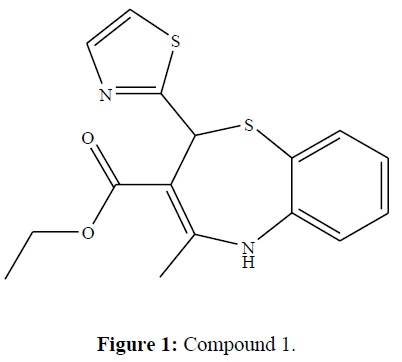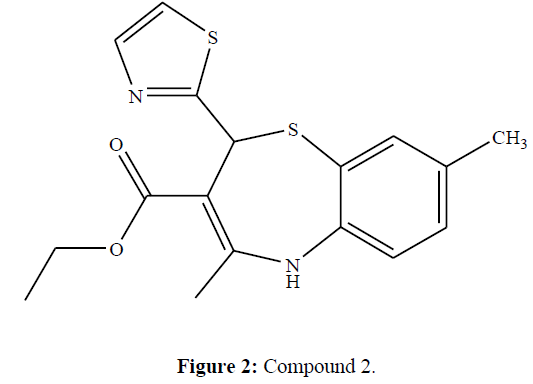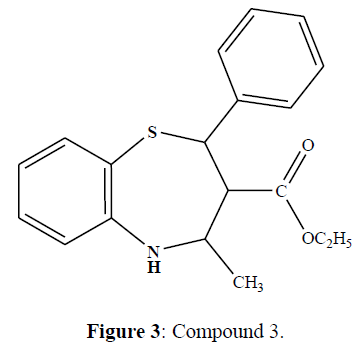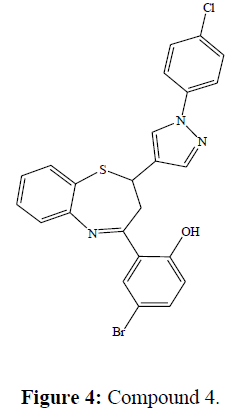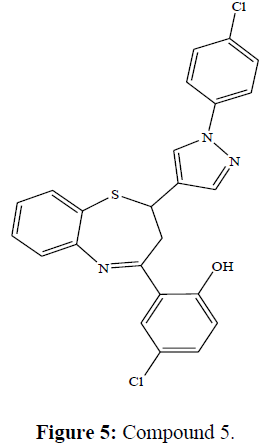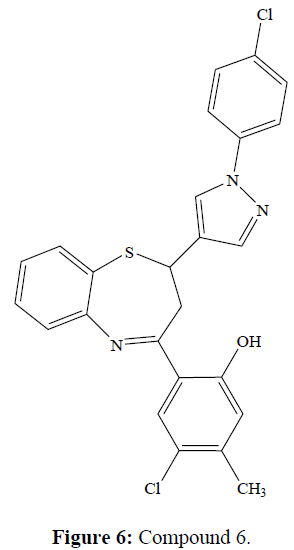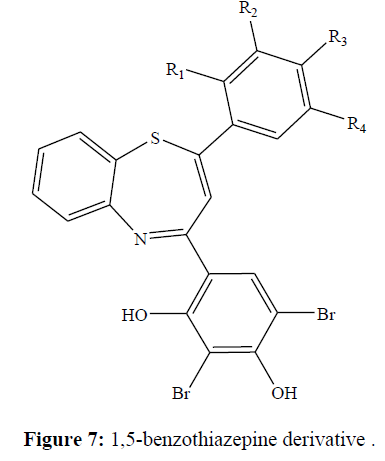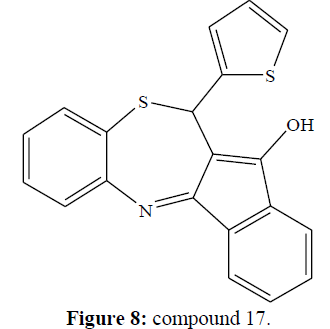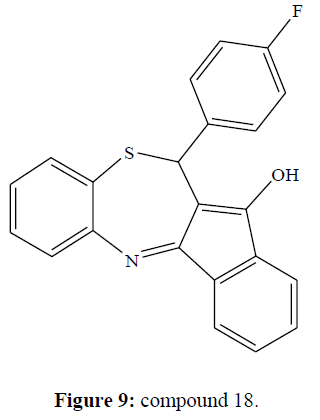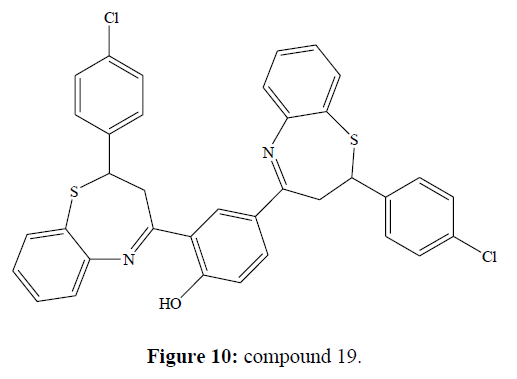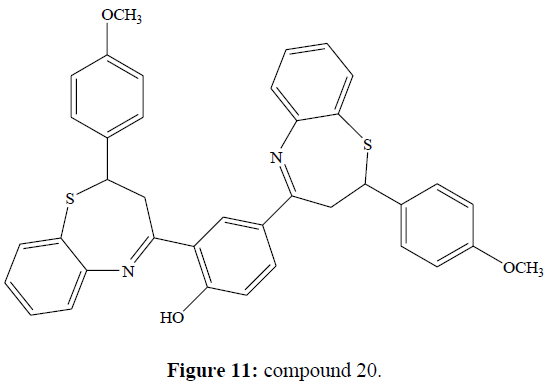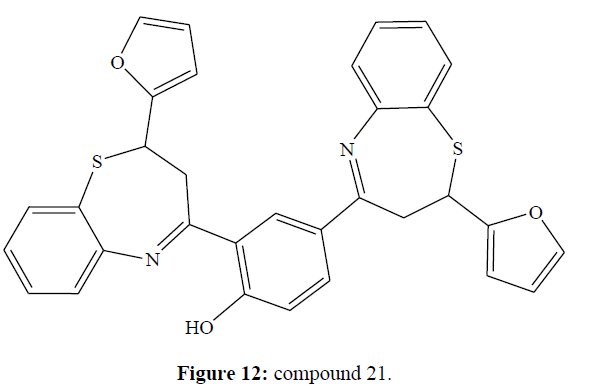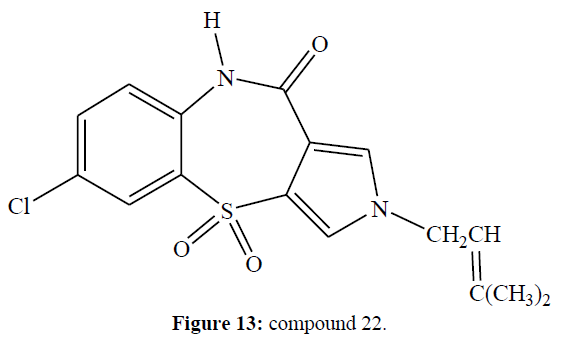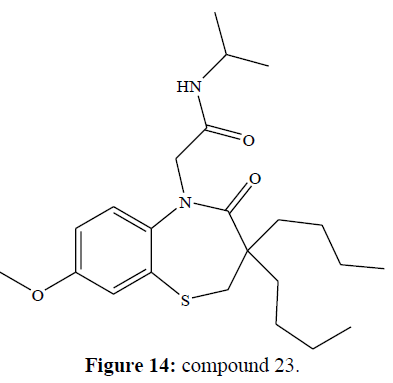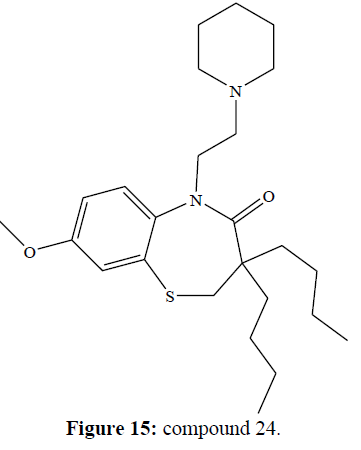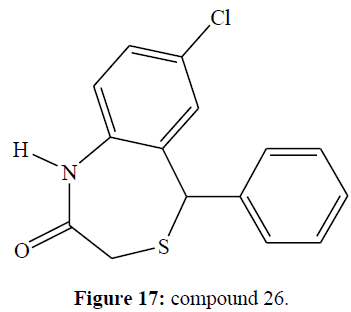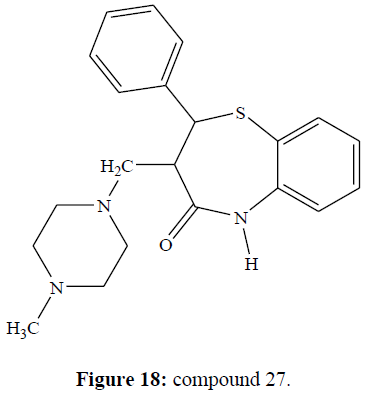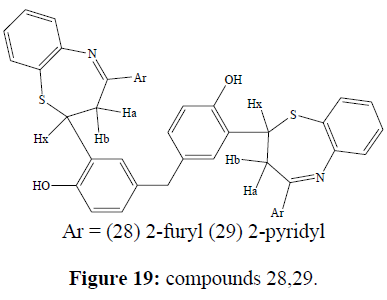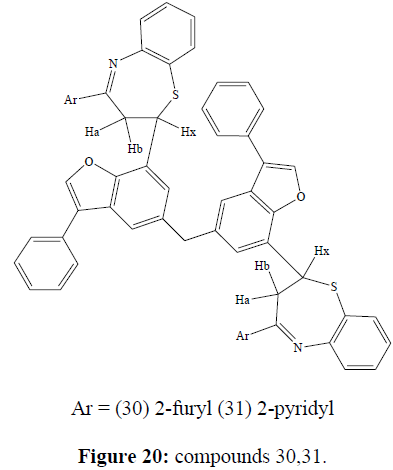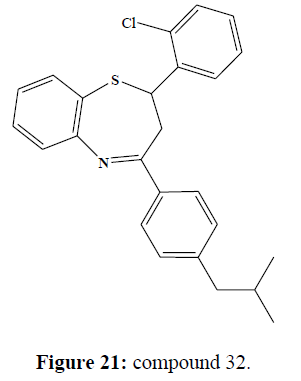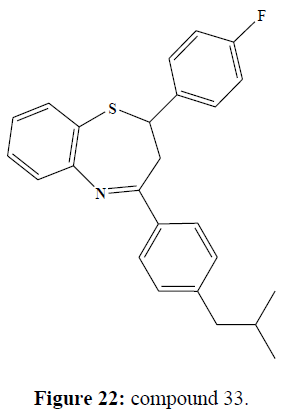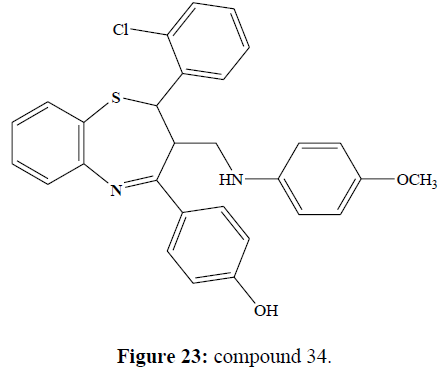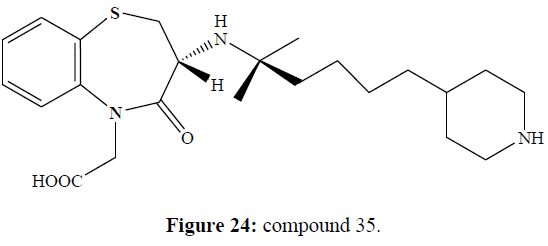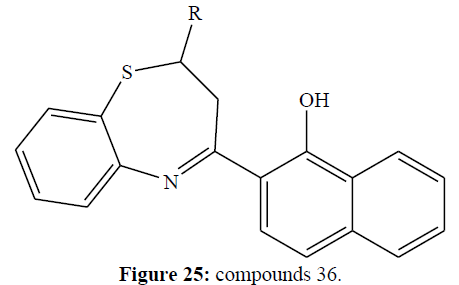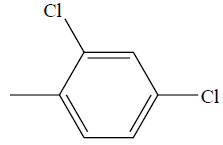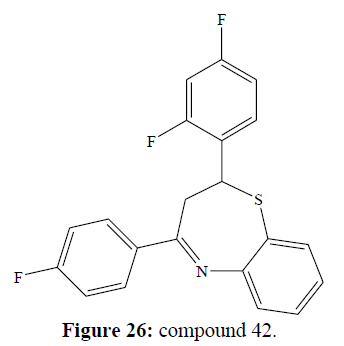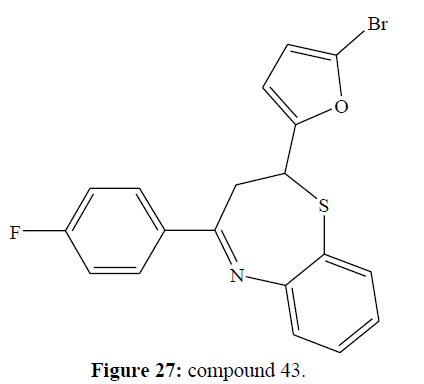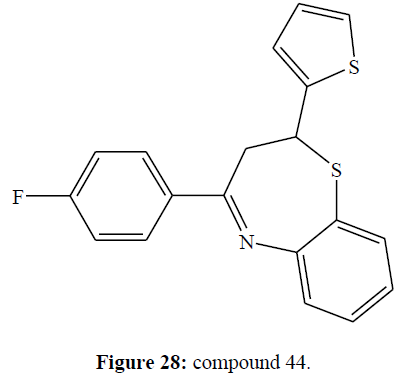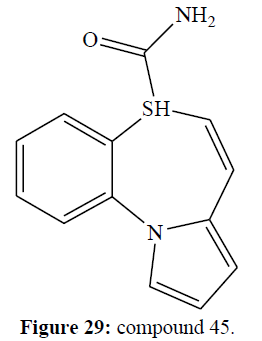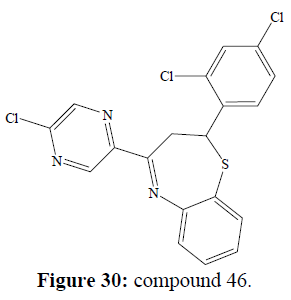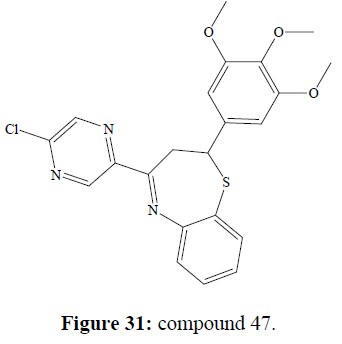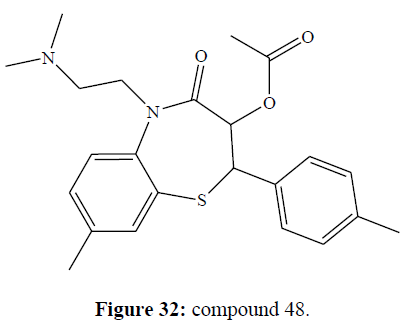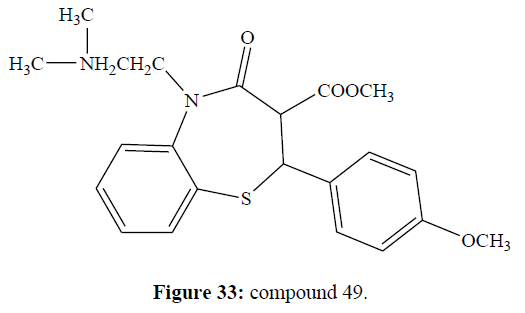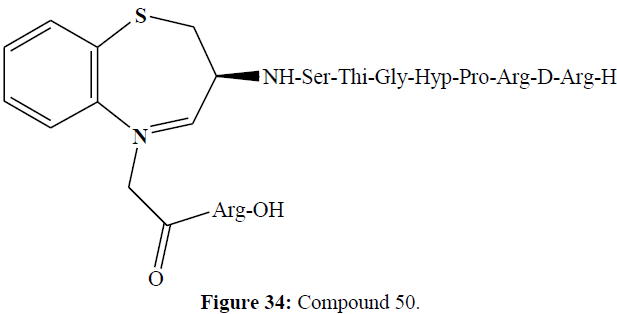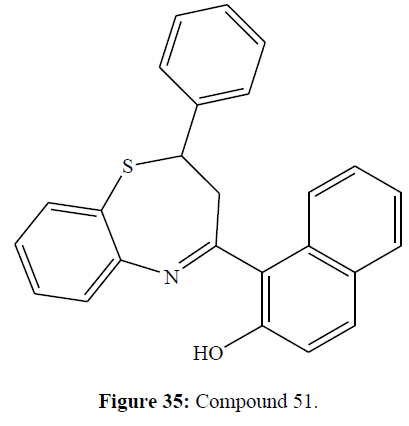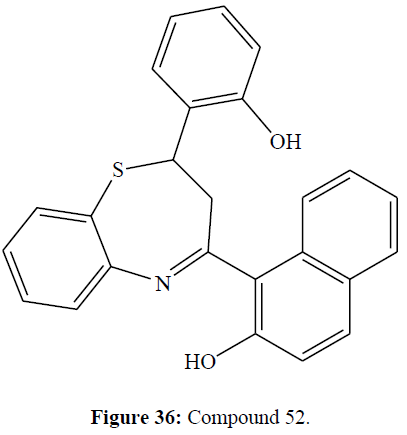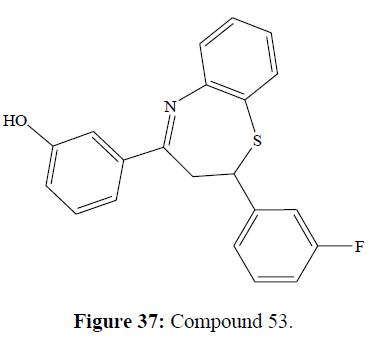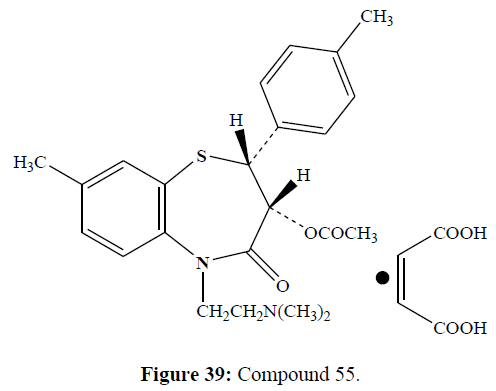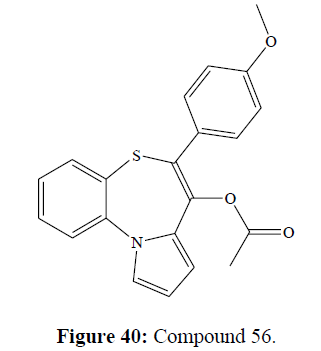Review Article - Der Pharma Chemica ( 2022) Volume 14, Issue 10
1, 5-Benzothiazepine: As Potential Biologically Active Agent
Vikash Kumar Chaudhri1*, Devender Pathak2 and Zeashan Hussain12Rajiv Academy for Pharmacy, Mathura, Uttar Pradesh, India-281001, India
Vikash Kumar Chaudhri, Department of Chemistry, Mahatma Gandhi Institute of Pharmacy, Lucknow, Uttar Pradesh, India-227101, India, Email: vikashk464@gmail.com
Received: 10-Oct-2022, Manuscript No. dpc-22-76841; Editor assigned: 12-Oct-2022, Pre QC No. dpc-22-76841; Reviewed: 26-Oct-2022, QC No. dpc-22-76841; Revised: 28-Oct-2022, Manuscript No. dpc-22-76841; Published: 05-Nov-2022, DOI: 10.4172/0975-413X.14.10.19-33
Abstract
The 1,5-benzothiazepine ring system is an important pharmacophore in medicinal chemistry and modern drug discovery. 1,5-benzothiazepine and its derivatives are used in organic synthesis and they are used in evaluating new product that possesses different biological activities. The first molecule of 1,5-benzothiazepine used clinically was diltiazem, followed by clentiazem, for their cardiovascular action. Some of the 1,5-benzothiazepine derivatives were also used clinically for CNS disorders which includes thiazesim, clothiapine and quetiapine. Therefore, the 1,5-benzothiazepines are useful compounds in the drug research which has stimulated the invention of a wide range of synthetic methods for their preparation and chemical transformations. This review article covers the most active 1,5-benzothiazepine derivatives and discusses the structure-activity relationship of the most potent compounds. It can act as an important tool for medicinal chemists to develop newer compounds possessing 1,5-benzothiazepine moiety that could be better agents in terms of efficacy and safety.
Keywords
1,5-benzothiazepine, Biological activities, Pharmacophore
INTRODUCTION
The medicinal chemistry is devoted to the discovery and development of new agents for cure and prevention of diseases. A new drug discovery is exceeding complex and involves selection of moiety, establishing their synthesis and recognition of biological activity. An important aspect of medicinal chemistry has been to establish a relationship between chemical and biological activity. The 1,5-benzothiazepines are the fused heterocyclic nucleus in which the thiazepine ring is fused to an aromatic ring. The 1,5-benzothiazepines are important nitrogen and sulphur containing seven member heterocyclic compounds in drug research since they possess diverse bioactivities [1].
The 1,5-benzothiazepine derivatives are of particular interest for lead discovery because they have been found active against different families of targets. The first molecule of 1,5-benzothiazepine used clinically was diltiazem, followed by clentiazem, for their cardiovascular action. Some of the 1,5-benzothiazepine derivatives were also used clinically for CNS disorders which includes thiazesim, clothiapine and quetiapine. Therefore, the 1,5-benzothiazepines are useful compounds in the drug research which has stimulated the invention of a wide range of synthetic methods for their preparation and chemical transformations [2]. The importance of the l,5-benzothiazepine nucleus has been well established as illustrated by a large number of compounds which have been patented as chemotherapeutic agents. 1,5-Benzothiazepines is one such class of heterocyclic with renowned biological activities in the central nervous system and other therapeutic actions [3]. The first molecule of 1,5-benzothiazepine used clinically was diltiazem, followed by clentiazem, for their cardiovascular action. Some of the 1,5-benzothiazepine derivatives were also used clinically for CNS disorders which includes thiazesim and quetiapine fumarate Khairy [4]. Traditionally, small heterocyclic molecules have been a reliable source for discovery of novel medicinal agent [5]. A successfully strategy by the literature data supports substitution in 1,5-Benzothiazepine at 3 and 5 positions, yielding a compound with clinical benefit for new antiepileptic drugs [6].
Therapeutic potential biological activities of 1,5-benzothiazepines derivatives
Antimicrobial activity
Synthesis and in-vitro antimicrobial activity of some newer 1,5-Benzothiazepine derivative having potent activity against against C. neoformans, C. neoformans clinical isolates, C. albicans, E. coli and S. aureus [7]. The bioactive assay results revealed that most of the 1,5-benzodiazepine derivatives exhibited considerable potency against all of the tested strains. In particular, compounds (1) and (2) (MIC: 2–6 μg mL-1, MFC: 10–14 μg mL-1) exhibited excellent antifungal activity and were found to be 32–64 and 9–12.8 times more potent than the reference drugs against C. neoformans, respectively. Moreover, compound (2) (MIC: 40μg mL-1) displayed equipotent antibacterial activity against E. coli and S. aureus compared to the reference drugs ciprofloxacin (Figure 1,2).
Two series of novel 1,5-benzothiazepine derivatives were synthesized [8]. The compound was evaluated for antibacterial and antifungal activities. The results showed that compound (3) exhibited the greatest antimicrobial activity. The structure activity relationship revealed that substituents in phenyl rings had a great effect on the antimicrobial activity of the compound (Figure 3).
Anti-inflammatory activity
A novel series of 1, 5-benzothiazepine derivatives were synthesized and characterized by spectral studies [9]. All the newly synthesized compounds were screened for in vivo anti-inflammatory activity at a dose of 10 mg/kg BW. Among those tested, compounds (4), (5), and (6) exhibited significant anti-inflammatory activity in models of acute inflammation such as rat paw edema, compared with diclofenac as a standard drug (Figures 4-6).
Anti-lung cancer activity
A novel series of 1,5-benzothiazepine derivatives synthesized and preliminary screening of anti-lung cancer agents [1]. All the newly synthesized compounds (7-16) show in vitro anticancer activity against human lung cancer cell line using Adriamycin as a reference drug (Figure 7) (Table 1).
| Entry | 7 | 8 | 9 | 10 | 11 | 12 | 13 | 14 | 15 | 16 |
|---|---|---|---|---|---|---|---|---|---|---|
| R1 | H | CH3 | H | H | H | H | OH | H | H | Furyl |
| R2 | Cl | H | H | OH | OCH3 | OCH3 | H | OCH3 | NO2 | |
| R3 | H | H | OH | OCH3 | OCH3 | OCH3 | H | OH | H | |
| R4 | H | H | H | H | H | OCH3 | Br | Br | H |
Antimalarials activity
Identification and validation of tetracyclic benzothiazepines as Plasmodium falciparum cytochrome bc1 inhibitors [10]. Out of all compounds tested two compounds (17) and (18) show most significant activity against P. falciparum (Figures 8,9).
Antibacterial activity
A novel series of bis-[1,5]-benzothiazepines were synthesized by base catalyzed reaction of bis-chalcones with two equivalent of 2-aminothiophenol [11].
All the synthesized compounds were screened for in vitro for their antimicrobial activity against Gram-positive bacteria viz. Staphylococcus aureus, Bacillus subtilis and Gram-negative bacteria viz. Escherichia coli, Pseudomonas aeruginosa using ciprofloxacin as standard antibacterial. The antibacterial activity was determined by the cup plate method on agar nutrient media at the concentration of 100 μg per disk using DMSO as solvent. Among the compounds (19), (20) and (21) having 4-Cl, 4-OCH3 and furan substituents respectively have showed significant activities against both gram-positive and gram-negative bacteria (Figures 10-12).
Anti-HIV Activity
A number of 2H-pyrrolo[3,4-b] [1,5]benzothiazepine derivatives and the related synthetic intermediates 3-pyrrolyl aryl sulfones were designed, synthesized and tested as potential anti-HIV-1 agents targeted at the reverse transcriptase [12]. Most of the synthesized derivatives were active against HIV-1-induced cytopathicity in MT-4 cells at concentrations ranging from 0.3 to 40 μM. In particular, compound (22) was the most potent derivative with EC50 = 0.3 μM, comparable to that of nevirapine used as reference drug (Figure 13).
Antiangiogenic and antioxidant activity
Synthesis of 1,5-benzothiazepin-4-(5H)-one as a potent antiangiogenic and in vitro antioxidant activities [13]. All the synthesized novel compounds exhibited very good inhibition of capillary proliferation, thus proving their anti-angiogenic properties. In addition, the in vitro antioxidant activities of these compounds were evaluated using diphenyl picryl hydrazine (DPPH), OH-, metal ion-chelating and NO (nitric oxide) assays, and the results compared with butylated hydroxytoluene (BHT). Compounds (23) and (24) showed excellent free-radical scavenging activities in the metal ionchelating assay and nitric oxide radical scavenging properties at a concentration of 20-100 μg/mL, and are thus more potent than BHT (Figures 14,15).
Anti-diabetic activity
Mitochondrial sodium calcium exchange inhibitors are novel agents in the treatment of type -2 diabetes due to their glucose dependent efficacy. While the compounds of this class are expected to correct hyperglycemia, they do not lower basal glucose level thus avoiding the serious consequence of hypoglycemia. The 3D QSAR analysis of benzothiazepines and their derivatives were performed by comparative molecular field analysis to determine the structural factors required for the activity of these compounds [14]. After performing a leave one out cross validation study, satisfactory results were obtained, with cross-validated q2 and conventional r2 values of 0.711 and 0.970, respectively. The compound (25) and (26) show most potent mitochondrial sodium calcium exchange inhibitors as antidiabetic agents (Figure 16,17).
Anti-ulcer Activity
(-)-cis-2, 3-dihidro-3-(4-methylpiperazinylmethyl)-2-phenyl-1, 5-benzothiazepin-4 (5h)-one hydrochloride and its analogues synthesized [15]. The compound (27) show potent anti-ulcer and gastric secretary inhibiting activities using Shay’s ulcer model in rat (Figure 18).
Anti-fungal activity
A series of novel methylene-bis-[1,5]-benzothiazepines and methylene-bis-benzofuranyl-[1,5]- benzothiazepines were prepared by the reaction of methylene-bis-chalcones with 2-aminothiophenol followed by the condensation with α-bromoacetophenone [16]. All the synthesized compounds were tested for their antifungal activity. Among the synthesized compounds, (28), (29), (30) and (31) were found to be the most active against Candida albicans, Aspergillus fumigatus, Trichophyton rubrum, and Trichophyton mentagrophytes. It is interesting to note that the compounds with heterocyclic ring substituents at the 4th position of benzothiazepine system displayed notable antifungal activity, almost equal to that of streptomycin (Figure 19,20).
A novel series of 1,5-benzothiazepine derivatives synthesized by the reaction of isobutyl chalcones with 2-aminothiophenol [17]. Among the halogens, fluorinated compound (32) shown potent activity with MIC 0.4 μg/mL and 1.6 μg/mL against Staphylococcus aureus and Candida albicans respectively. The compound (33) was also more active than the standard drugs against Staphylococcus aureus, Proteus vulgaris and Aspergillus niger (MIC 0.8 μg/mL) and Candida tropicalis (1.6μg/mL) (Figure 21,22).
Anticonvulsant activity
A new series of 4-(4′-Hydroxyphenyl)-2-(3-substitutedphenyl)-3-(4-substitutedphenylamino methylene)-2,3-dihydro-1,5-benzothiazepines and 4- (4′-Hydroxyphenyl)-2-(3-substituted phenyl)-3-(4-substitutedphenylaminomethylene)-2,3-dihydro-1,5-benzoxazepins were synthesized and evaluated for their anticonvulsant activity [18]. All these compounds were screened in vivo anticonvulsant activity and acute toxicity. Compound (34) was found to be most potent compound of this series and was compared with the reference drug phenytion sodium (Figure 23).
Angiotensin converting enzyme (ACE) inhibitors
A series of novel (R)-3-amino-4-oxo-2,3,4,5-tetrahydro-1,5-benzothiazepine-5-acetic acid derivatives synthesized [19]. Most of the compounds showed potent ACE inhibitory activity in vitro and in vivo. The compound (35) was selected as the most promising ACE inhibitor (Figure 24).
Antihypertensive Activity
Synthesis a new series of 1,5-benzothiazepine derivatives from aryl chalcones by microwave-assisted solvent-free technique using silica as solid support and zinc acetate as catalyst [20]. All the synthesized compounds were screened for antihypertensive activity. Compounds (36), (37), (38), (39), (40) and (41) exhibited anti-hypertensive effect in the form of a significant lowering in systolic, diastolic and mean arterial pressure in the treatment group animals when compared with the disease control group animals (Figure 25) Table 2.
| Compound | R |
|---|---|
| 36 |
|
| 37 | 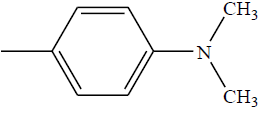 |
| 38 | 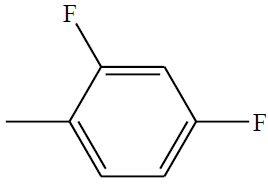 |
| 39 | 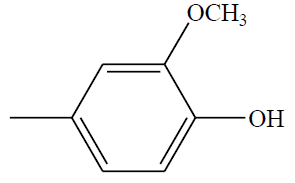 |
| 40 | 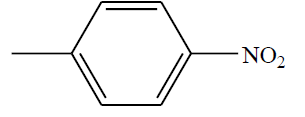 |
| 41 | 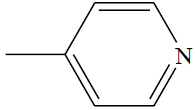 |
Anticancer activity
Anovel series of 1,5-Dihydrobenzothiazepines are synthesized by conventional synthesis method. All the compounds have been screened for in vitro cytotoxic activity by the MTT assay [21]. HT-29 (colon cancer), MCF-7 (breast cancer) and DU-145 (prostate cancer) cell lines. Among the compound (42) having a difluorophenyl moiety in its structure showed maximum activity with a IC50 value of 28 μg/Ml against HT-29 cell lines, compound (43) showed maximum activity (IC50 27 μg/mL) against MCF-7 cell lines and the compounds (43) and (44) showed maximum activity (IC50 16 μg/mL) against DU-145 cell lines (Figures 26-28)
Antipsychotic activity
A novel series of 9-substituted 1,5-benzothiazepines derivatives with antipsychotic activity . All the synthesized novel derivatives performed for antipsychotic activity against the anti-amphetamine activity in the rat. The most significant compound (45) showed best antipsychotic activity which is similar to that of diazepam used as a standard drug [22] (Figure 29).
Anti-tubercular activity
A series of novel chloropyrazine conjugated benzothiazepines synthesized and evaluated for anti-tubercular activity. Among the benzothiazepines series compounds (46) and (47) showed significant anti-tubercular activities (MICs 38.02 and 18.10 μM, respectively [23] (Figure 30,31).
Anti-platelet aggregation activity
1,5-benzothiazepine derivatives as potent anti-platelet aggregation activity by the method of Born, as the optical density at 600 nm of PRP during aggregation and expressed as the percentage of the difference in optical density between PRP at maximum aggregation and untreated PRP. The compound (48) TA-993, of the Ca2+ antagonist diltiazem, and inhibited platelet aggregation induced by collagen, ADP, epinephrine, platelet activating factor, arachidonic acid, and U-46619 in human platelets in vitro. TA-993 inhibited both primary and secondary phases of ADP-induced platelet aggregation and also exhibited a disaggregating effect on human platelet aggregates [24] (Figure 32).
Anti-arrhythmic activity
1,5-benzothiazepine derivatives with notable coronary vasodilating activity in anaesthetized dogs and in the isolated guinea pig heart. In epinephrine induced arrhythmias, the maximal antagonizing effect of the compound (49) was weaker than that of propranolol, nut it was noted that the duration of the effect of the former was longer than that of the latter [25] (Figure 33).
Bradykinin B2 receptor antagonist
A bradykinin analogue in which the Pro-Phe dipeptide was replaced by the (3S)[amino]-5-(carbonylmethyl)-2,3-dihydro-1,5-benzothiazepine- 4(5H)-one moiety has been synthesized [26]. All the synthesized compounds were examined in vitro for their binding affinity toward bradykinin B1 and B2 receptors. The compound (50) competed with bradykinin binding to human cloned B2 receptor giving Ki values of 13 ± 2 nM (Figure 34).
CNS depressant activity
A novel series of 2,4-subsituted-1,5-benzothiazepine in solvent free condition under microwave irradiation. All the compounds were evaluated for their CNS depressant activity, among the compounds (51 and 52) show significant CNS depressant activity as comparison to thiopental sodium standard drug [27] (Figures 35, 36).
Cholinesterases inhibition
Solid-phase synthesis of a parallel library of 3′-hydroxy-2,3-dihydrobenzothiazepines has been carried out through [4+3] annulation of α,β- unsaturated ketones with aminothiophenol, using Wang resin as solid support reported [28]. The synthesized compounds were evaluated for their potential as cholinesterase inhibitors. The results of the inhibition of cholinesterase revealed that the compound 3-((E)-2-(3-fluorophenyl)-2,3- dihydrobenzo[b][1,4]thiazepin-4-yl)phenol (53) have a greater potential as cholinesterase inhibitors as compared to acetylcholinesterase (Figure 37).
Calmodulin antagonistic activity
A series of newly synthesized 1,5-benzothiazepines derived from diltiazem were tested for calmodulin antagonistic activities using Ca(2+)- calmodulin stimulated phosphodiesterase [29]. The compound (54) benzoyloxy moieties at position 4 of 1,5-benzothiazepine ring of diltiazem showed a dose-dependent inhibitory action with the potencies comparable to that of a calmodulin antagonist. In contrast, diltiazem did not exert the inhibitory action at the same concentrations. Further, radio ligand binding experiment, using a radio labeled 1,5-benzothiazepine, showed that these compounds bound to Ca(2+)-calmodulin complex, but not to calmodulin in the presence of EGTA, suggesting that these 1,5-benzothiazepines are new calmodulin antagonists (Figure 38).
Cardiovascular activity
Cardiovascular effects of 1, 5-Benzothiazepine derivatives having a l-cis and d-cis configuration in anesthetized dogs. The peak response to l-cisdiltiazem (20 min after the administration) was observed earlier than that to d-cis-TA-993 compound (55) (60 min after the administration). On the other hand, d-cis-TA-993, as well as diltiazem, caused transient hypotension, tachycardia and increases in vertebral, brachial, femoral and common carotid blood flow. Furthermore, their peak effects were observed immediately after the administration. Potency ratios of the vasorelaxing effects of d-cis-TA-993, l-cis-diltiazem and d-cis-TA-993 to diltiazem in the isolated and K+-contracted canine femoral artery were 0.096, 0.032 and 1.209, respectively. pA2 values for d-cis-TA-993 and diltiazem against Ca2+ induced contractions in the isolated and K+ depolarized canine saphenous artery were 5.50+/-0.11 and 7.12+/-0.18, respectively [30] (Figure 39).
Calcium channel antagonist activity
The synthesis and cardiovascular activity of novel pyrrolo[2,1-d][1,5]-benzothiazepine derivatives are reported [31]. The most significant compound (56) showed unexpected potency in displacing the binding of [3H]nitrendipine from L-type calcium channels, much higher than of reference calcium antagonists such as verapamil and (+)-cis-diltiazem and its IC50 equal to 0.13 nM for inhibition of [3H]nitrendipine binding (Figure 40).
CONCLUSION
Modifications on 1,5-benzothiazepine moiety displayed valuable biological activities. Substituted 1,5-benzothiazepine a major class of anti-infective agent with significant potential for development of therapeutic agent in medicinal chemistry. 1,5-benzothiazepine nucleus is an important pharmacophore molecule for further modification and improvement in field of anti-infective drug development.
References
- Ameta KL, Rathore NS, Kumar B. Int J Pharm. 2013, 3: p. 328-333.
- Ansari FL, Iftikhar F, Iulhaq B, et al., Bioorg Med Chem. 2008, 16: p. 7691-7697.
- Morton GC, Salvino JM, Labaudiniere RF, et al., Tetrahedron Lett. 2000, 41: p. 3029-3033.
- Khairy AM, El-Bayouki. Org Chem Int. 2013, p. 1-72.
- Gulhan TZ, Seref D, Ahmet DO, et al., Eur J Med Chem. 2004, 39: p. 267-272.
- Raja AS, Pandeya SN, Panda SS, et al., Pharma Chem J. 2007, 41: p. 302-307.
- Wang LZ, Li XQ, An YS. Org Biomol Chem. 2015, 13: p. 5497-5509.
- Lanzhi W, Ping Z, Xuemei Z, et al., Eur J Med Chem. 2009, 44: p. 2815-2821.
- Ganesh RM, Shivdas SB, Damodhar MA, et al., Int J Innov Res Sci Eng Tech. 2014, 3: p. 13208-13215.
- Dong C, Urgaonkarm S, Cortese JF, et al., Chem Bio. 2011, 18: p. 1602-1610.
- Ramchandra N, Deshmukha RV, Denglea Gajanan RJ. Chem Pharm Res. 2016, 8: p. 250-253.
- Roberto Di, Robert S, Farmaco C. 2005, 60: p. 285-392.
- Channegowda VD, Goravanahalli MR, Nanjappagowda DR, et al., Curr Chem Lett. 2015, 4: p. 133-144.
- Dasoondi AS, Singh V, Voleti SR, et al., Indian J Pharm Sci. 2008, 70: p. 186-192.
- Ohno S, Izumi K, Mizukoshi K, et al., Chem Pharm Bull. 1983, 31: p. 1780-1783.
- Sanjeeva R, Cherkupally, Purnachandra R, et al., Org Commun. 2008, 1: p. 84-94.
- Afzal BS, Yejella RP. J Int Acad Phys Sci. 2021, 25: p. 165-191.
- Garg N, Chandra T, Archana J, et al., Eur J Med Chem. 2010, 45: p. 1529-1535.
- Inada Y, Itoh K, Kamiya K, et al., Japanese J Pharmacol. 1988, 47: p. 135-141.
- Rajini Kanth KN, Rama Rao N, Venkata Rao V, et al., Res J Pharm Biol Chem Sci. 2016, 7: p. 1360-1365.
- Vutla VR, Yejella RP, Nadendla R, et al., Der Pharm Lett. 2013, 5: p. 93-100.
- Nacci V, Fiorini I, Vomero S, et al., Farmaco Sci. 1984, 39: p. 289-304.
- Afzal B, Shaik Richie R, Bhandare S, et al., Arab J Chem. 2021, 14: p. 102915-102930.
- Odawara A, Kikkawa K, Katoh M, et al., Cir Res. 1996, 78: p. 643-649.
- Yamada K, Shimamura T, Nakajima H. Japanese J Pharmacol. 1973, 23: p. 321-328.
- Muriel A, Isabelle D, Gilbert B, et al., J Med Chem. 1999, 42: p. 4185-4192.
- Vyawahare D, Ghodke M, Pratima N. Int J Pharm Pharma Sci. 2010, 2: p. 27-29.
- Ansari FL, Iftikhar F, Mirza IB, et al., Bioorg Med Chem. 2008, 16: p. 7691-7697.
- Suzuki T, Ohashi M, Takaiti O, et al., Arzneimittel-Forschung. 1994, 44: p. 3-6.
- Minako K, Hirotaka I, Hisayoshi D, et al., Biol Pharm Bull. 1998, 21: p. 50-55.
- Campiani G, Fiorini I, Filippis De M, et al., J Med Chem. 1996, 39: p. 2922-2938.
Indexed at, Google Scholar, Crossref
Indexed at, Google Scholar, Crossref

